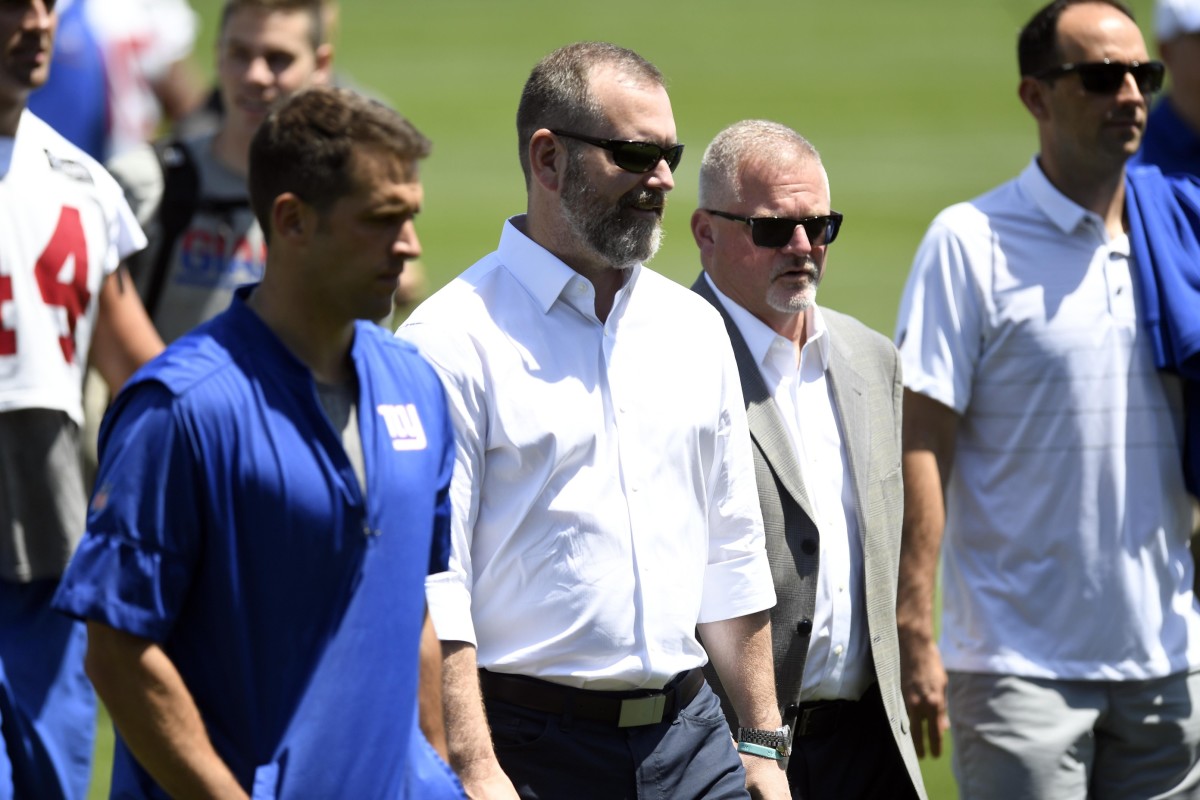A Very Early Look at the Giants 2021 Salary Cap Health

The late George Young once said that the NFL salary cap was often the first thing he thought of in the morning and the last thing he thought of at night.
These days, the questions about the salary cap continue as fans also like to look ahead at where their favorite team stands.
The challenge in trying to forecast where a team stands with its salary cap is that it’s fluid. For example, the Giants, as of June 2, have $16,604,755 in salary cap space, according to the NFLPA’s public cap report.
That number is expected to change as the Giants sign draft picks and tweak their roster throughout training camp, as credits and debits will hit the Giants' cap space based on the various terms of their contracts.
There is also the matter of how COVID-19 end up affecting the cap. It’s already been estimated that clubs could lose between $70-$100 million if fans are unable to attend games this season.
Although the television contracts make up a vast majority of the league’s revenue, the loss of ticket sales, parking, concessions, sponsorship deals, and merchandise sales are just as significant.
That’s why in general it’s not a good idea to look too far ahead at where a team stands cap-wise because so much can change.
Butdon't tell that to an NFL apologist, whose job duties include projecting the cap multiple years down the line.
Over the Cap took a very early look at the 2021 NFL Teams by Team Salary Cap Health. In their comprehensive report, which is based on four factors, the Giants fall into Tier 3 (along with the Panthers, Vikings, Texans, Packers, Lions, and Rams), a tier defined as follows:
This is a more haphazard group as it consists of a few teams that will likely have their cap position overstated in 2021 and a few that will have it understated. For the most part, this group of teams have one primary avenue to added cap space- either restructures or cuts but not nearly as much flexibility with both as the teams in the tier above. The 49ers, Lions, and Rams can benefit the most with the restructure strategy while the Vikings, Packers, Giants, Panthers, and Texans could slice away to gain room. This is also the group where one big extension could drop them a tier and have a ripple effect on the cap. Of these teams, the 49ers have the most overall flexibility and are probably in the best shape.
If the salary cap is reduced, the Giants will likely have to slice players off their books (which they probably would have done anyway) to clear money for young players such as pending UFA defensive tackle Dalvin Tomlinson; defensive tackle Leonard Williams (assuming he doesn’t reach a new deal by the July 15 deadline); and running back Saquon Barkley, who would be eligible to seek a new deal after this season.
In looking ahead, the Giants could a few big-money cuts on players who likely aren’t in their long-term plans to ensure that they don’t have to cut their cap down to the bone should COVID-19 create a ripple effect across the board against the 2021 projected salary cap.
Of the current Giants who rank at the top of the team’s salary cap figures for 2021, cutting Nate Solder would yield a $14 million savings, a decent amount of coin.
Solder’s chances of being on the roster after this year sharply declined after the team drafted Andrew Thomas and Matt Peart to potentially be their starting tackles of the future, making it very difficult to justify keeping Solder beyond this year.
Another potential salary-cap casualty could be guard Kevin Zeitler, who would yield a $12 million savings. Zeitler has been a steady player for the Giants, so there is no pressing need to unload his contract right now.
With the 2021 season being the final one in Zeitler’s contract, the Giants could move on and plan to start Nick Gates, who would be a restricted free agent in 2021 (and hence, this would cost a lot less to retain) at right guard.
Meanwhile, at center, a position Gates is supposedly going to compete for, if the Giants can get Shane Lemieux ready for the starting job by 2021, their offensive line would be set.
A third potential salary-cap cut with no more guaranteed money and currently sits in the top-10 of the Giants cap figures for 2021 is receiver Golden Tate.
Tate is signed through 2022, but removing his contract from the books would yield a $6.147 million savings (or, if they decided to designate him as a post-June 1 transaction, the savings would grow to $8.5 million with only $2.352 million in dead money being carried over into 2022.
The Giants draft a receiver this year—they’re instead looking for Corey Coleman to bounce back from his torn ACL and for at least one of their three undrafted free agents (Binjamen Victor, Derrick Dillon, and Austin Mack) as well as David Sills V to step up this year—could always look to draft a receiver in next year’s class, which is shaping up to be another strong crop of candidates.
While the Giants’ 2021 cap health could go either way depending on how far the projected $215 million cap estimate drops due to any COVID-19 related fallout, the Giants should have enough room to continue rebuilding.





